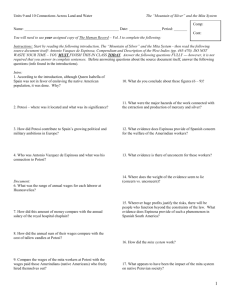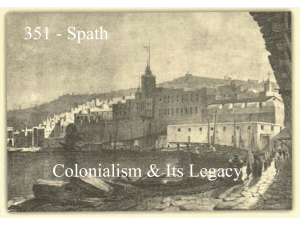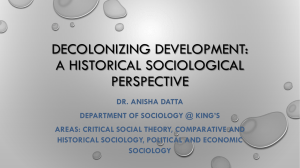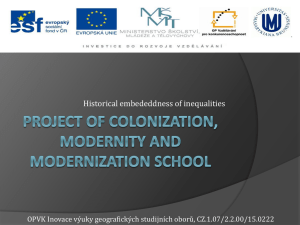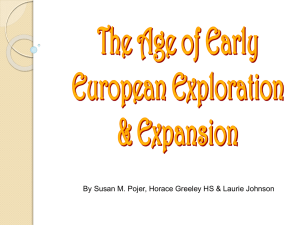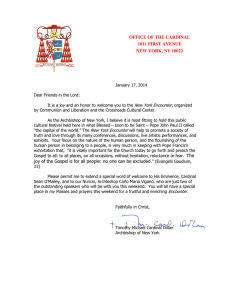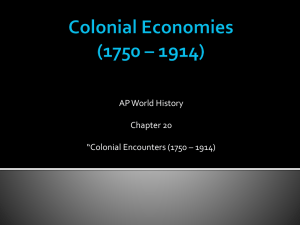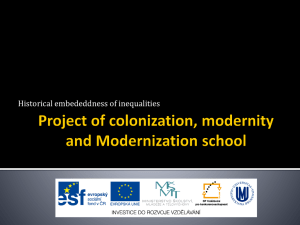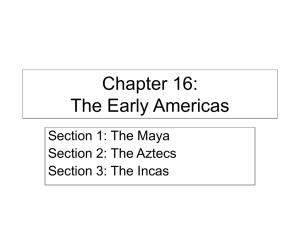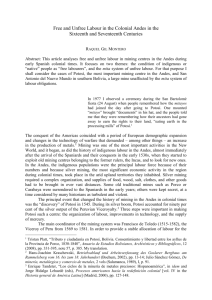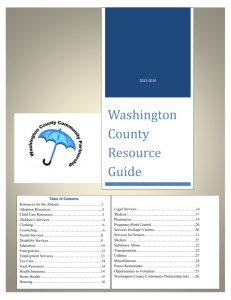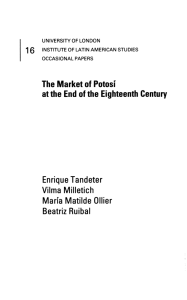Colonial Legacies in Peru
advertisement
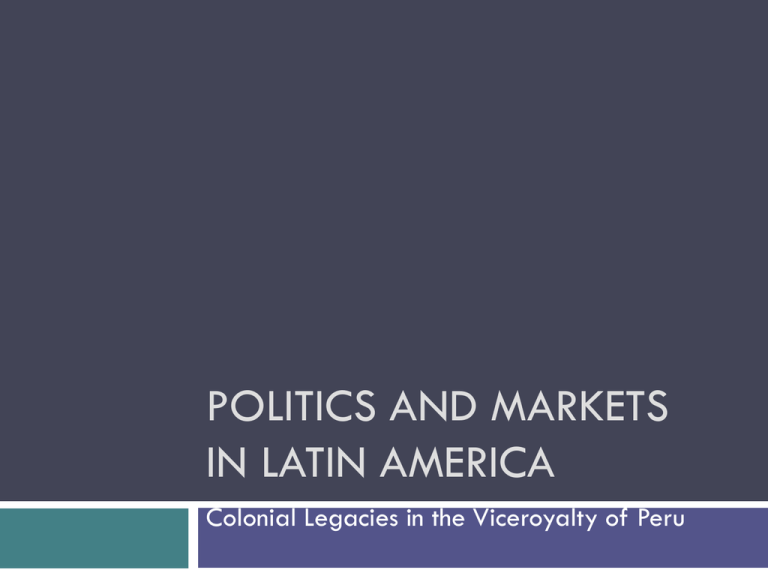
POLITICS AND MARKETS IN LATIN AMERICA Colonial Legacies in the Viceroyalty of Peru Colonial Legacies Chasteen argues that: "For Latin America, conquest and colonization by the Spanish and Portuguese created patterns of social domination that became eternal givens…" (p. 29) Is this a convincing argument? Native American Settlements At the Time of the Encounter Maya: 1800 B.C. Aztec: 1325 – 1521 In 1521 Hernán Cortés conquered the capital, Tenochtitlan, and defeated the Aztec Emperor Hueyi Tlatoani Moctezuma II Tupi: At it’s height the Mayan empire was extensive and advanced; the empire went into decline in the 8th and 9th centuries and only a few centers remained at the time of the Encounter. Portuguese and Spanish settlers assimilated, enslaved, or exterminated most Tupis. They were decimated and today occupy only small reserves in the Amazon basin Inca: 1100 – 1572 Francisco Pizzarro captured Atahualpa in 1532; assassinated him in 1533 and placed his brother, the collaborater Manco Inca Yupanqui, on the throne. The last Inca stronghold was discovered and the last ruler, Túpac Amaru, captured and executed in 1572. Colonialism in The Andes: Before the Encounter Settlement Patterns Inca civilization Communal landholding Social Life Village life Political Life Loose empire Tribute and Mita Economic Life Herding, soil enrichment, and agriculture. The Encounter Movement of Europeans Spanish conquerors in the Americas were "undisciplined adventurers" who moved across Latin America in waves Disease often preceded the explorers and nearly always followed them Settlers lagged far behind the explorers Colonialism The Andes After the Encounter Settlement Patterns: Viceroyalty of Peru • Explorers did not reach Peru until fairly late. However, they were very interested in the apparent mineral wealth that they saw • Permanent settlement centered in the productive lowland and costal areas and near sources of mineral wealth. Viceroyalties in 1784 Colonialism The Andes After the Encounter Social and Political Life Village life disrupted, in part Permanent migration and resettlement was rare European colonialism built on and intensified indigenous forms of authority and empire Social stratification Tribute and forced labor The more marginal the land for productive use, the more likely that village life would remain intact. Economic Life Mining was the center of Peruvian economic importance. Labor intensive Local markets sprang up around the mines, often staffed by women, to support the laborers Potosí: Before the Encounter Evidence dates silver smelting in the Andes to around 1000 to 1200 A.D., long before the Incas. The Incas harnessed local labor through the Mita system to create a silver industry that thrived until the Spanish took it over. Indigenous techniques: open-cut digging and smelting in guayrachinas. Potosí: Spanish Colonialism Jaime Villalobos, geologist: "Mining, whether in colonial times, or whether by the private sector or by the stateowned Bolivian Mining Corporation, has taken non-renewable resources from the area and left behind only contamination and poverty." The Spanish discovered the silver mines at Potosi in 1545 In total around 2 billion ounces of silver were extracted from the mountain during the colonial era In 1570 the population of Potosí was around100,000. The mita system of forced labor brought over 13,000 indigenous workers per year to Potosi Minting coinage was Potosi's other industry Fray Antonio de la Calancha, 1638: "Every peso coin minted in Potosi has cost the life of 10 Indians who have died in the depths of the mines." Potosí: Now The mines and mills at Potosi are still active today working conditions are similar to Colonial times: Work from dawn till dusk Child labor Extreme temperatures Coca leaves Poverty Health concerns: respiratory ailments, infant mortality, life expectancy Dynamite is used to blast away the ore The pay is about $5 a day Renewed corporate interest in Potosí
